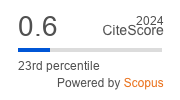Serum fibrinogen level and platelet-to-lymphocyte ratio as predictors of vulnerable atherosclerotic plaque formation in coronary arteries in patients with coronary artery disease and arterial hypertension
https://doi.org/10.29001/2073-8552-2025-40-3-50-56
Abstract
Objective. It is well-established that rupture of lipid-rich atherosclerotic lesions in the coronary arteries (referred to as vulnerable, high-risk, or unstable plaques) with subsequent coronary artery thrombosis is the most common cause of acute coronary syndrome and sudden cardiac death. Vulnerable plaques are most accurately detected using optical coherence tomography (OCT). Given the high cost of OCT, an urgent task is to search for markers of the development of vulnerable atherosclerotic plaques in the coronary arteries based on routine examination data, which will allow developing effective strategies for the prevention of associated coronary events. In hypertensive patients potential markers may include indicators of systemic inflammation, but little information is available on this topic.
Aim: To identify potential markers of vulnerable atherosclerotic plaques in coronary arteries in patients with stable coronary artery disease and hypertension based on routine laboratory testing.
Material and Methods. The study included patients >18 years old, with a diagnosis of stable coronary artery disease and indications for OCT-guided PCI (extended/calcified/bifurcation lesions and/or diabetes), who gave informed consent to participate in the study. All patients underwent laboratory and instrumental examination in accordance with approved standards of medical care. A total of 30 patients were included in the study: aged 66.5±9.2 years (including 17 men); office BP 134.4±12.4/78.3±6.05 mmHg (systolic, SBP/ diastolic, DBP, respectively); type 2 diabetes mellitus (DM2) was detected in 30%; body mass index was 30.7±5.3 kg/m2.
Results. According to OCT data, patients were divided into two groups: group 1 (n = 19) with the presence of vulnerable atherosclerotic plaque morphology (rich lipid core, lipid plaque with lipid arc expansion>180°, presence of macrophage clusters) and group 2 (n = 11) with atherosclerotic plaques without signs of vulnerability. The groups were comparable in terms of gender, age, blood pressure, antihypertensive, hypoglycemic and lipid-lowering therapy. However, patients in group 1 had statistically significantly higher levels of fibrinogen (3.39±0.86 vs. 2.75±0.45, p = 0.038), platelet-lymphocyte ratio (119.2±31.9 vs. 84.0±30, p = 0.006) and blood creatinine (88.3±13.2 vs. 76.7±7.8, p = 0.014). According to multivariate logistic regression analysis, blood fibrinogen and plateletlymphocyte ratio were independent markers of the presence of vulnerable atherosclerotic plaques.
Conclusion. Platelet-lymphocyte ratio and blood fibrinogen levels, determined as part of a routine examination and reflecting increased activity of systemic inflammation, are markers of the development of vulnerable atherosclerotic plaques in the coronary arteries in patients with stable coronary artery disease and hypertension.
Keywords
About the Authors
I. V. SuslovRussian Federation
Dr. Ivan V. Suslov - Junior Research Scientist, Laboratory of RoentgenEndovascular Surgery, Cardiology Research Institute, Tomsk NRMC.
111а, Kievskaya str., Tomsk, 634012
S. E. Pekarsky
Russian Federation
Stanislav E. Pekarskiy - Dr. Sci. (Med.), Leading Research Scientist, Laboratory of Roentgen-Endovascular Surgery, Cardiology Research Institute, Tomsk NRMC.
111а, Kievskaya str., Tomsk, 634012
M. G. Tarasov
Russian Federation
Mikhail G. Tarasov - Cand. Sci. (Med.), Junior Research Scientist, Laboratory of Roentgen-endovascular surgery, Cardiology Research Institute.
111а, Kievskaya str., Tomsk, 634012
M. A. Manukyan
Russian Federation
Musheg A. Manukyan - Cand. Sci. (Med.), Junior Research Scientist, Department of Hypertension, Cardiology Research Institute, Tomsk NRMC.
111а, Kievskaya str., Tomsk, 634012
A. Yu. Falkovskaya
Russian Federation
Allа Yu. Falkovskaya - Dr. Sci. (Med.), Head of Department of Hypertension, Cardiology Research Institute, Tomsk NRMC.
111а, Kievskaya str., Tomsk, 634012
V. F. Mordovin
Russian Federation
Victor F. Mordovin - Dr. Sci. (Med.), Professor, Leading Research Scientist, Department of Hypertension, Cardiology Research Institute, Tomsk NRMC.
111а, Kievskaya str., Tomsk, 634012
I. V. Zyubanova
Russian Federation
Irina V. Zyubanova - Cand. Sci. (Med.), Research Scientist, Department of Hypertension, Cardiology Research Institute, Tomsk NRMC.
111а, Kievskaya str., Tomsk, 634012
V. A. Lichikaki
Russian Federation
Valeriya A. Lichikaki - Cand. Sci. (Med.), Research Scientist, Department of Hypertension, Cardiology Research Institute, Tomsk NRMC.
111а, Kievskaya str., Tomsk, 634012
E. I. Solonskaya
Russian Federation
Ekaterina I. Solonskaya - Cand. Sci. (Med.), Junior Research Scientist, Department of Hypertension, Cardiology Research Institute, Tomsk NRMC.
111а, Kievskaya str., Tomsk, 634012
S. A. Khunkhinova
Russian Federation
Simzhit A. Khunkhinova - Assistant Doctor, Department of Hypertension, Cardiology Research Institute, Tomsk NRMC.
111а, Kievskaya str., Tomsk, 634012
A. E. Baev
Russian Federation
Andrey E. Baev - Cand. Sci. (Med.), Head of the Laboratory of RoentgenEndovascular Surgery, Cardiology Research Institute, Tomsk NRMC.
111а, Kievskaya str., Tomsk, 634012
References
1. Vaisman D.Sh., Enina E.N. Сoronary artery disease mortality rates in the Russian Federation and a number of regions: dynamics and structure specifics. Cardiovascular Therapy and Prevention. 2024;23(7):3975. (In Russ.). https://doi.org/10.15829/1728-8800-2024-3975.
2. Gaba P., Gersh B.J., Muller J., Narula J., Stone G.W. Evolving concepts of the vulnerable atherosclerotic plaque and the vulnerable patient: implications for patient care and future research. Nat. Rev. Cardiol. 2023;20(3):181–196. https://doi.org/10.1038/s41569-022-00769-8.
3. Kochergin N.A., Kochergina A.M Potential of optical coherence tomography and intravascular ultrasound in the detection of vulnerable plaques in coronary arteries. Cardiovascular Therapy and Prevention. 2022;21(1):2909. (In Russ.). https://doi.org/10.15829/1728-8800-20222909.
4. Park S.J., Ahn J.M., Kang D.Y., Yun S.C., Ahn Y.K., Kim W.J. et al. Preventive percutaneous coronary intervention versus optimal medical therapy alone for the treatment of vulnerable atherosclerotic coronary plaques (PREVENT): a multicentre, open-label, randomised controlled trial. Lancet (London, England). 2024;403(10438):1753–1765. https://doi.org/10.1016/S0140-6736(24)00413-6.
5. Sapoznikov S.S., Bessonov I.S., Zyrianov I.P. Successful endovascular treatment of left main bifurcation lesion using the DK-CRUSH technique with intracoronary imaging using optical coherence tomography: A case report. Siberian Journal of Clinical and Experimental Medicine. 2022;37(1):162–169. (In Russ.) https://doi.org/10.29001/2073-85522022-37-1-162-169.
6. Demin V.V., Babunashvili A.M., Kislukhin T.V., Kostyrin E.Yu., Shugushev Z.Kh., Ardeev V.N. et al. Application of intravascular physiology methods in clinical practice: two-year data from the Russian registry. Russian Journal of Cardiology. 2024;29(2):5622. (In Russ.). https://doi.org/10.15829/1560-4071-2024-5622.
7. Kovalskaya A.N., Bikbaeva G.R., Duplyakov D.V., Savinova E.V.Features of simple inflammation markers in assessing the plaque vulnerability in patients with acute coronary syndrome. Russian Journal of Cardiology. 2025;30(1):5850. https://doi.org/10.15829/1560-4071-2025-5850.
8. Rong J., Gu N., Tian H., Shen Y., Deng C., Chen P. et al. Association of the monocytes to high-density lipoprotein cholesterol ratio with instent neoatherosclerosis and plaque vulnerability: An optical coherence tomography study. International Journal of Cardiology. 2024;396:131417. https://doi.org/10.1016/j.ijcard.2023.131417.
9. Surma S., Banach M. Fibrinogen and atherosclerotic cardiovascular diseases-review of the literature and clinical studies. Int. J. Mol. Sci. 2021;23(1):193. https://doi:10.3390/ijms23010193.
10. Eapen D.J., Manocha P., Patel R.S., Hammadah M., Veledar E., Wassel C. et al. Aggregate risk score based on markers of inflammation, cell stress, and coagulation is an independent predictor of adverse cardiovascular outcomes. J. Am. Coll. Cardiol. 2013;62(4):329–337. https://doi.org/10.1016/j.jacc.2013.03.072
11. Corban M.T., Hung O.Y., Mekonnen G., Eshtehardi P., Eapen D.J., Rasoul-Arzrumly E. et al. Elevated levels of serum fibrin and fibrinogen degradation products are independent predictors of larger coronary plaques and greater plaque necrotic core. Circ J. 2016;80(4):931–937. https://doi.org/10.1253/circj.CJ-15-0768.
12. Adamstein N.H., MacFadyen J.G., Rose L.M., Glynn R.J., Dey A.K., Libby P. et al. The neutrophil-lymphocyte ratio and incident atherosclerotic events: analyses from five contemporary randomized trials. Eur Heart J. 2021;42(9):896–903. https://doi.org/10.1093/eurheartj/ehaa1034.
13. Jiang J., Zeng H., Zhuo Y., Wang C., Gu J., Zhang J. et al. Association of neutrophil to lymphocyte ratio with plaque rupture in acute coronary syndrome patients with only intermediate coronary artery lesions assessed by optical coherence tomography. Front. Cardiovasc. Med. 2022;9:770760. https://doi.org/10.3389/fcvm.2022.770760.
14. Tudurachi B.S., Anghel L., Tudurachi A., Sascău R.A., Stătescu C. Assessment of Inflammatory Hematological Ratios (NLR, PLR, MLR, LMR and Monocyte/HDL-Cholesterol Ratio) in Acute Myocardial Infarction and Particularities in Young Patients. Int. J. Mol. Sci. 2023;24(18):14378. https://doi.org/10.3390/ijms241814378.
15. Willim H.A., Harianto J.C., Cipta H. Platelet-to-lymphocyte ratio at admission as a predictor of in-hospital and long-term outcomes in patients with st-segment elevation myocardial infarction undergoing primary percutaneous coronary intervention: a systematic review and meta-analysis. Cardiol. Res. 2021;12(2):109–116. https://doi.org/10.14740/cr1219.
16. Azab B., Shah N., Akerman M., McGinn J.T. Value of platelet/lymphocyte ratio as a predictor of all-cause mortality after non-ST-elevation myocardial infarction. J. Thromb. Thrombolysis. 2012;34(3):326–334. https://doi.org/10.1007/s11239-012-0718-6.
17. Yildiz A., Yuksel M., Oylumlu M., Polat N., Akyuz A., Acet H. et al. The utility of the platelet-lymphocyte ratio for predicting no reflow in patients with ST-segment elevation myocardial infarction. Clin. Appl. Thromb. Hemost. 2015;21(3):223–228. https://doi.org/10.1177/1076029613519851.
18. Song K., Yao W., Yan H., Zhang Y., Li Y., Li T. et al. Associations between the platelet lymphocyte ratio and albumin with plaque calcification in patients with acute coronary syndrome: an optical coherence tomography study. Rev. Cardiovasc. Med. 2025;26(4):28167. https://doi.org/10.31083/RCM28167.
19. Tufaro V., Serruys P.W., Räber L., Bennett M.R., Torii R., Gu S.Z. et al. Intravascular imaging assessment of pharmacotherapies targeting atherosclerosis: advantages and limitations in predicting their prognostic implications. Cardiovascular Research. 2023;119(1):121–135. https://doi.org/10.1093/cvr/cvac051.
Review
For citations:
Suslov I.V., Pekarsky S.E., Tarasov M.G., Manukyan M.A., Falkovskaya A.Yu., Mordovin V.F., Zyubanova I.V., Lichikaki V.A., Solonskaya E.I., Khunkhinova S.A., Baev A.E. Serum fibrinogen level and platelet-to-lymphocyte ratio as predictors of vulnerable atherosclerotic plaque formation in coronary arteries in patients with coronary artery disease and arterial hypertension. Siberian Journal of Clinical and Experimental Medicine. 2025;40(3):50-56. (In Russ.) https://doi.org/10.29001/2073-8552-2025-40-3-50-56





.png)





























